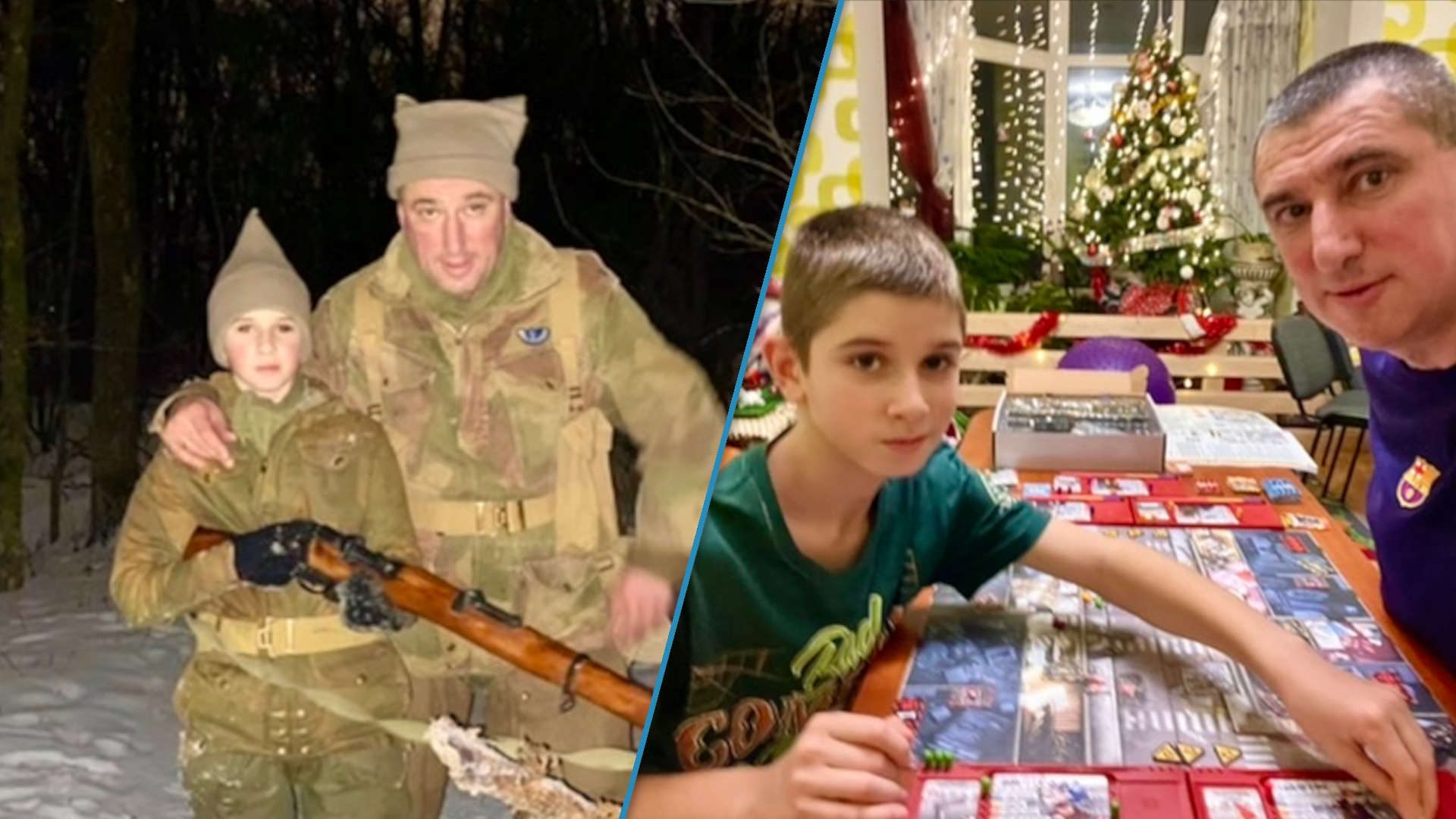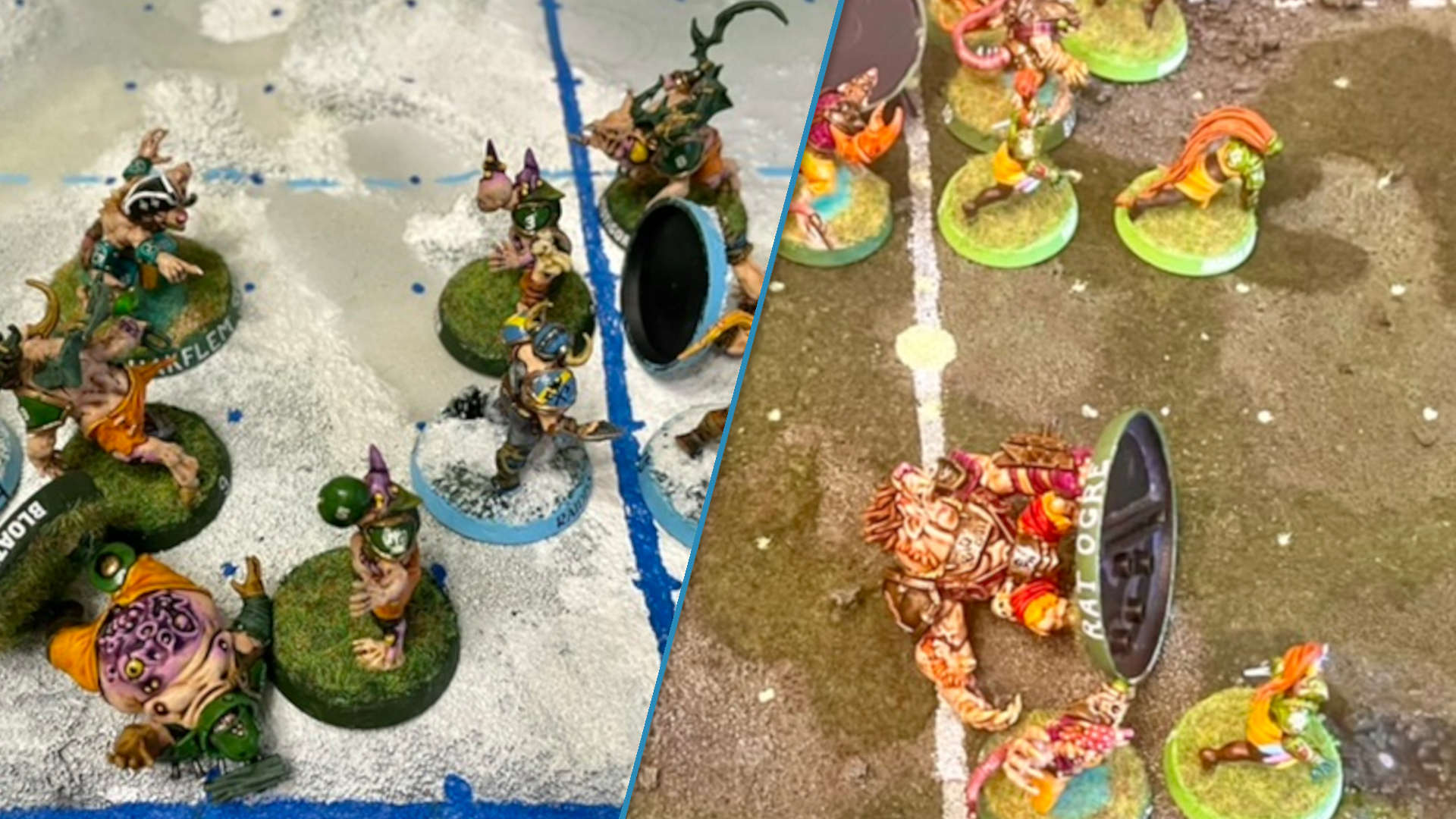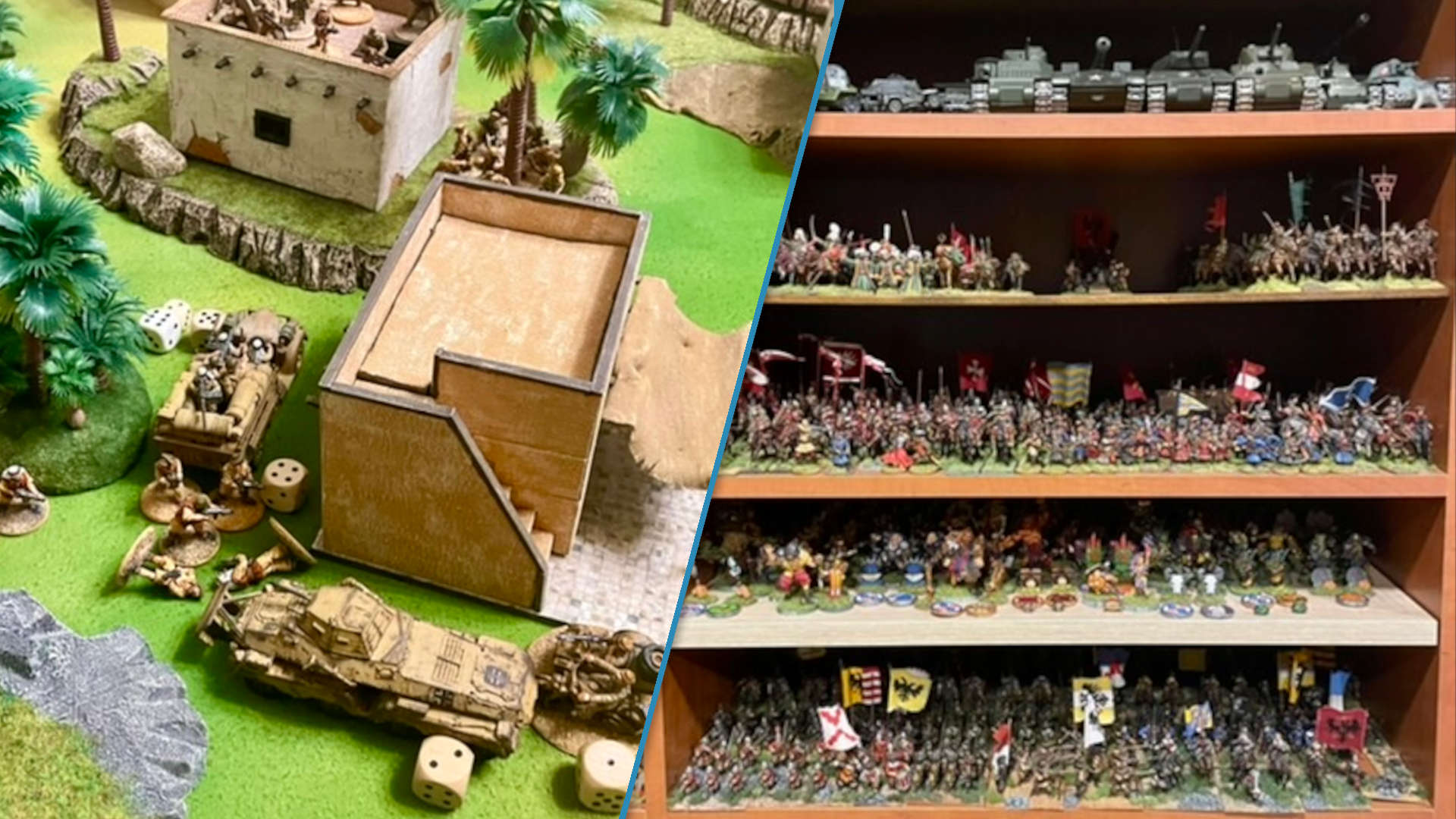Ukrainian military volunteer commander Oleh Smorchkov and his son Oleh play the Warhammer board game Blood Bowl “as often as possible”, despite being separated by thousands of miles. The younger Smorchkov evacuated with his mother to the Netherlands in March 2022 during the battle of Kyiv, but games over video calls help father and son to stay connected.
The older Smorchkov says he has been part of a volunteer unit “since the first days” of the war, and commands a volunteer unit tasked with shooting down Shahed kamikaze drones. Videos of him playing a game of Blood Bowl remotely with his son were shared by AFP and Canal+ reporter Arman Soldin.
Father and son began playing Blood Bowl in 2019. If you’re not familiar with it, Blood Bowl is a strategy board game themed around American football that takes place in the Warhammer: The Old World setting. Smorchkov says that the pair built up a collection of teams that included humans, Orcs, Halflings, Skaven (rat men), Imperial Nobility, Wood Elves, Khorne (blood cultists), Necromantic Horrors, and more.
Smorchkov says his son evacuated Kyiv with his mother on March 7 2022, leaving for the Netherlands to escape Russian forces “constantly shelling the city with artillery and rockets”. During the battle for Kyiv, Smorchkov manned a machine gun in three during three engagements that saw his volunteer unit down Russian combat drones, according to reporter Soldin.
The younger Smorchkov took the Blood Bowl collection with him to the Netherlands, and found a local wargame club where he is able to play. Smorchkov says that playing games via video call was his son’s idea: “He arranged the figures and threw the corresponding dice, and I told [him] where to go and what to do”.
Spring 2022 brought a reprieve for Kyiv as Russian forces retreated. Once mail service was restored Smorchkov says he ordered new Blood Bowl teams, and received some more from his son. The pair have since played a whole league between those teams by video conference, using a co-operative variant of the game rules, both players mutually deciding the moves for one team before moving onto the other.
Smorchkov says the co-operative plays style is “so that we would not argue and quarrel about the result. We need unity and mutual support. Blood Bowl helped a lot with that!”
Father and son play “as often as possible”. His son has school and football training in the Netherlands, while Smorchkov says he has “combat duty” as the commander of a drone defence unit, and substantial organisational responsibilities come with the role.
“The state gave us only weapons and ammunition”, he says, adding that the unit is “constantly looking for funds to buy suitable equipment for the fighters and organize food”. He credits the support of “many volunteers” providing uniforms and armour.
Smorchkov describes a vibrant wargaming scene in Kyiv before the war: “we in Kyiv regularly conducted epic battles with rules for the late Middle Ages, the Thirty Years’ War, the Napoleonic Wars, and World War II”, adding that some games could last for two days.
He says that games are now very rare, since: “most of the wargamers from my entourage are at the front”. Smorchkov adds that he does play the occasional game of Blood Bowl with members of his unit when on duty and “there are no air raids”.
Father and son played other games before the war, which Smorchkov says included Zombicide – a horror board game themed around escaping a city under assault from relentless zombies – as well as a “huge collection” of historical miniatures and scenery which he built and painted himself.
Smorchkov is passionate about the wargaming pastime, saying that he and his son dream of creating “An interactive museum of [model] soldiers based on our collection, [where] children and adults… can play a historical wargame, and also try to paint a soldier on their own.” He adds: “We will probably do it after the victory”.
Arman Soldin shared the original photographs of Smorchkov playing against his son via smartphone during a quiet night watch, waiting for air raid warnings that might demand a response. He says that this isn’t representative of what he’s seen in most units.
“This is a more ‘relaxed’ unit as we’re in Kyiv”, he says, adding that in Donbas “it’s simply impossible to imagine someone playing such a game because of the noise, the shelling, the stress”. He says that the soldiers he has met there “have their hands shaking very often and are trying to save the battery on their phone as much as possible”. While soldiers may have access to Starlink satellite connectivity, they “wouldn’t use it to play a game.”
We recently wrote about a group of Czech wargamers raising funds for the Ukrainian military by painting and auctioning a huge army from the Astra Militarum Warhammer 40k faction. Last winter we also spoke to a Ukrainian electrician who kept himself occupied during blackouts caused by Russian attacks on power infrastructure by building papercraft Warhammer 40k tanks.
If you’re interested in Blood Bowl, the current tabletop version is Blood Bowl Second Season edition. There’s also a series of digital adaptations – you can check out our Blood Bowl 3 review if you’re interested in a version of the game that’s easier to play over a long distance.
Source: Wargamer






